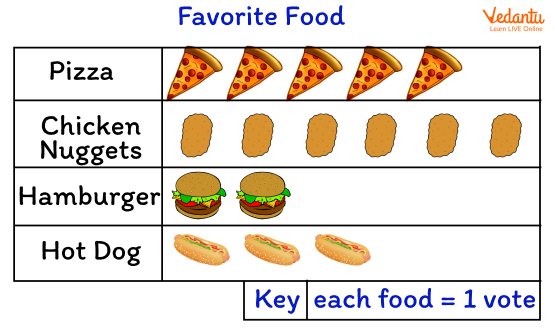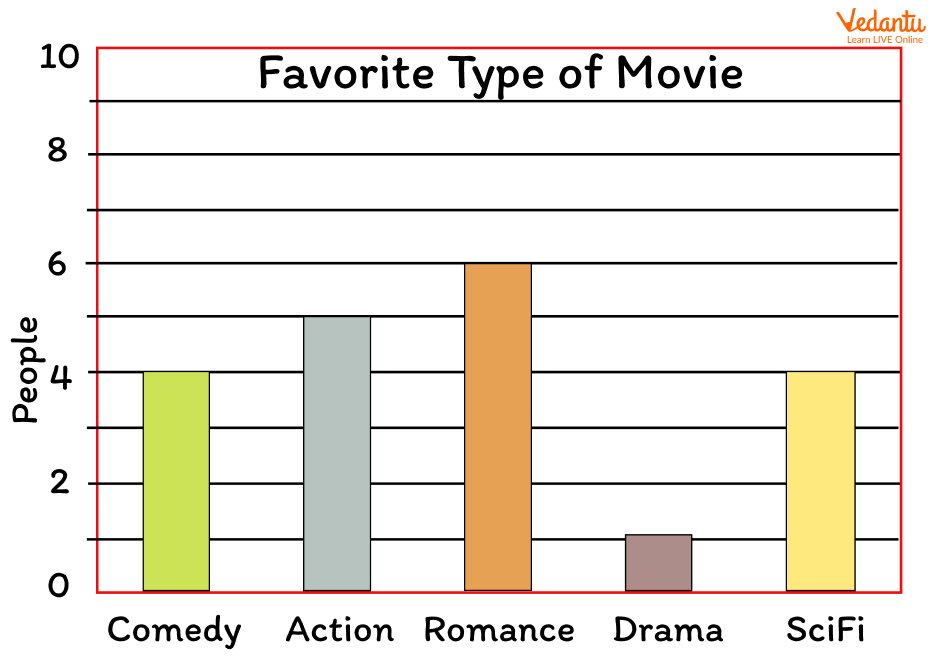




Quick Tricks to Collect, Group & Show Data for Kids
In your school, you must have observed your teacher taking attendance of students in your class and every day recording it in the attendance register, or must have seen your teacher record your marks on report cards after every examination. Similarly, you must have seen different types of tables in your everyday life, consisting of names, numbers, figures, etc. These tables provide you with data.
Data is nothing but a collection of numbers gathered to provide you with some precise information. And, the process of collecting the set of data and organising or presenting it in a different form is known as data handling.
Data Handling Definition
Data handling is the process of gathering, recording, and presenting the data or information in a way that is meaningful to others.
Let's learn the different ways to represent raw data.
How to Represent Data Using Pictographs, Blocks, and Tally Marks
Here, we will learn to represent data using pictographs, tally marks, and bar graphs
Using Pictograph
A pictograph helps you to represent the given raw data through pictures of objects. This helps you to answer the questions based on the data at a glance.
Example:
Look at the pictograph below.

A pictograph
The above pictograph shows different kinds of fast food loved by children.
Using the pictogram above, you can easily answer the questions like:
How many children like hot dogs or pizza?
Which fast food is least or most preferred by children?
Using Bar Graphs
A bar graph, also known as a bar chart, is a graphical representation of data using bars of different heights.
Example
Suppose, you did a survey of your classmates to know which types of movies are most and least liked among them.
We can show this data on a bar like this:

A bar graph
Looking at the bar graph above, you can now easily tell that:
The movies based on “Romance” are the most liked. (Bar with maximum height).
The movies based on “Drama” are the least liked. (Bar with minimum height).
Using Tally Marks
Data can also be represented using tally marks. Tally marks are easy to draw. You just have to mark it on a piece of paper.
Example
What is your favourite ice cream flavour?
Ask your friends what their favourite ice cream flavour is.
Put a tally mark next to the ice cream flavour they like and write the total in the next column.
Result: 4 friends liked vanilla, 5 friends liked butterscotch, 2 friends liked strawberry, and 3 friends liked pista flavour.
The most liked flavour is butterscotch and the least liked flavour is strawberry.
Conclusion
In short, data handling is the process of gathering, recording, and presenting the data or information in a way that is helpful for others to analyse, make predictions and choices, and draw conclusions. The different ways to represent data include pictographs, bar graphs, pie charts, tally marks, etc.
FAQs on Data Handling for Grade 2: Simple Steps to Organize and Understand Data
1. What is the process of data handling?
The first step of data handling is to collect the data using the planned methodology. The second step is to record data with precision and accuracy. The third step is to analyse data to draw conclusions. The fourth step is to share data in a way which is useful to others.
2. What are the two types of data in data handling?
The two types of data in data handling are qualitative and quantitative data. Qualitative data provides descriptive information about something whereas quantitative data provides numerical information about something.

















